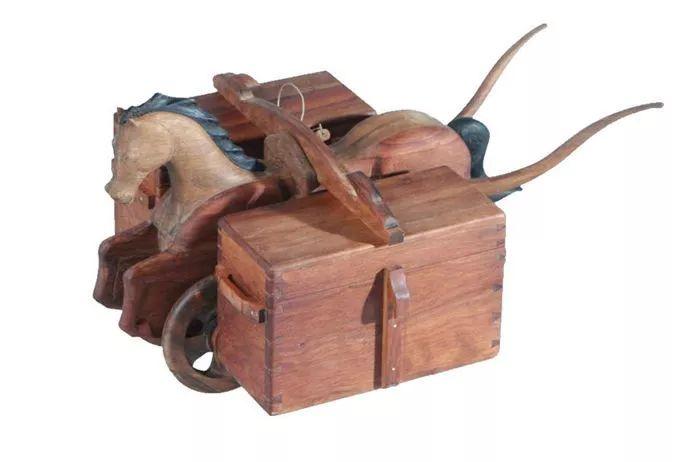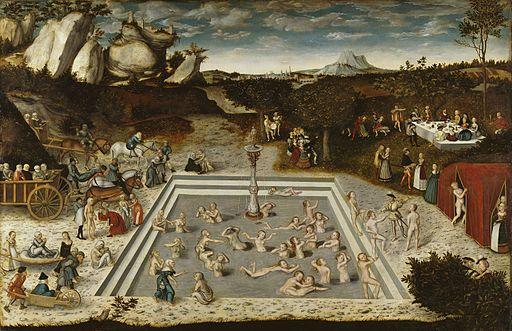The history of wheelchairs?
As we all know, wheelchair refers to a chair with wheels.
The origin of the chair is in Egypt around 3,000 BC, while the wheel has existed since the ancient Mesopotamian civilization, dating back to 5,000 BC.
So, when did people start to have the idea of combining these two objects? Let's take a look at the relevant records of history.
Hippocrates and the “Quadricycle”
The history of wheelchairs dates back to the ancient Greek period in the 5th century BC.
Hippocrates, then a doctor, had already started using a vehicle called a “quadricycle” to help people with mobility problems. This four-wheeled vehicle is made of wood and is supported by four wheels that allow the user to move easily on the ground.
However, this ancient wheelchair was not widely used because its design and manufacturing process were relatively simple and its functions were relatively limited. However, with continuous improvement, it gradually evolved into the stretcher bed we know well.
Zhuge Liang and "Wooden Cow and Floating Horse"
The wheelchair user we are most familiar with is probably Zhuge Liang during the Three Kingdoms period. In many film and television works, Zhuge Liang sits in a wooden wheelchair and gives orders on the battlefield. Many people have always believed that Zhuge Liang was the first wheelchair user and that the wheelchair was invented for Zhuge Liang as well.
In addition to using a wheelchair, it is recorded in "Three Kingdoms" that Zhuge Liang developed a form of transportation called the "Wooden Ox and Floating Horse".
The wooden ox and floating horse are a means of transportation invented by Zhuge Liang, the prime minister of the Shu Han dynasty during the Three Kingdoms period. They were mainly used to transport food for the army. Specifically, it is divided into two forms: wooden ox and street horse.
According to historical records, wooden cows and floating horses were used during the Northern Expedition from the ninth to the twelfth year of Jianxing (231-234). Its carrying capacity can reach "one-year-old grain", which is about over 400 kilograms, and its daily journey is "tens of kilometers for a special traveler and thirty miles for a group", providing food support for 100,000 people. strong Shu Han army.
However, despite the well-documented history of the wooden ox and the flowing horse, their true style and appearance remain unclear, and therefore there are many opinions regarding the explanation of their specific structure and operating principle. For example, the wooden cow structure mentioned in "The Method of Making a Wooden Cow and Floating Horses" has a square abdomen, a curved head, and a short daily journey. It is suitable for large use and not for small use. When traveling alone, they can travel dozens of kilometers a day; when traveling in a group, they can cover twenty miles a day. Each wooden ox can carry one person's food for a year, and whoever pushes the cart will not feel tired. A wheeled vehicle that can be pushed, we can see the shadow of the current hand-pushed wheelchair in the wooden ox and the fluttering horse.

The wheelchair in the painting "Fountain of Youth"
The 16th-century German painter Lucas Cranach's work "The Fountain of Youth" (1546) also depicts an elderly man being carried in a wheelbarrow.
The painting shows a magical fountain into which elderly and frail women were led to bathe, then restored to vitality and life, and finally immersed in music, dance and food. In this fairy tale, Cranach illustrates the true bathing culture of the Middle Ages, which was based on the belief that certain baths could cure illness and restore vitality.

Philip II of Spain's wheelchair
According to records, King Philip II, who ruled Spain in the late 16th century, had difficulty walking due to gout and used a hand-pushed wheelchair all year round. There are small wheels at the foot of the chair, but the direction of the wheels is fixed, so it can be speculated that it cannot turn.
It is similar to modern assistive models and is considered to be designed for relaxation, such as the tilt function, and does not seem to be suitable for self-propulsion.
Rocking chair by George Mackenzie, UK
Wheelchairs developed gradually during the 19th century, but demand for wounded soldiers in the Civil War accelerated their industrialization. The wheelchair was improved upon by George Mackenzie of England, who designed a wheelchair called the "Swing Chair." The characteristic of this kind of wheelchair is that it can travel on uneven ground, and the user can control the direction of the wheelchair by changing the center of gravity of the body. This invention made wheelchairs accepted and used by more people.
E&J four-wheel box wheelchair
Entering the 20th century, the four-wheel box type launched by the American wheelchair manufacturer E&J (Everest & Jennings) became mainstream. It had the same design as the wheelchairs we see today, driven by large rear wheels and small casters on the front wheels. The overall design of the chair’s frame and running components reduces weight, and some parts can be folded through the X-shaped frame.
In 1979, E&J could be said to have monopolized the entire wheelchair market, but its focus on exclusivity aroused dissatisfaction and was even prosecuted by the Department of Justice for violating the Antitrust Act. For more than 30 years, from the 1940s to the 1970s, advances in wheelchair technology and usability were stagnant. After the monopoly period ended, each company successively launched new types and styles, and wheelchairs gradually entered an era of technological and design innovation.